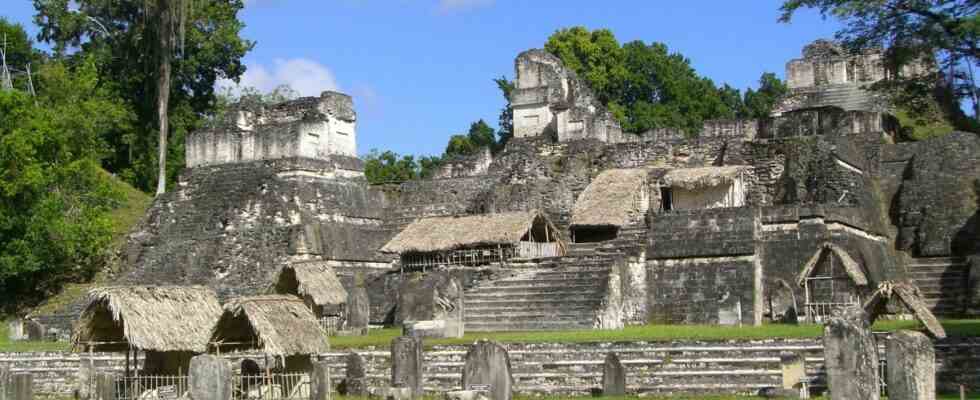The mineral cinnabar is bright red, and the Maya must have loved that color. According to archaeological finds, they painted houses and palaces with cinnabar during their so-called Classical period, i.e. from around 250 to 1100 AD, handled red-decorated ceramics and even decorated tools with the pigment. They also used the fabric in rituals, such as funerals. Perhaps that’s why they liked to use cinnabar so much because its color looked like blood, and they thought it contained the life force – which is probably why they also cultivated rituals with blood and human sacrifices. But the magnificent color was also dangerous, it is a combination of mercury and sulfur. And apparently out of love for vermilion, the Maya massively contaminated their cities with mercury and thus possibly made them uninhabitable in the long term.
Scientists around the geographer Duncan Cook from the Australian Catholic University in Brisbane have compiled all available data on the soil conditions of ancient Maya cities. As they now in the magazine Frontiers in Environmental Science report, they only found no increased mercury levels in one settlement, in Chan b’i on the coast of present-day Belize – possibly because the place was not permanently inhabited. In contrast, in six of nine other former cities, they found at least one place that was so heavily polluted that the current limit value of one microgram of mercury per gram of sediment is usually exceeded many times over. Former interiors and courtyards of residential buildings and workshops are particularly affected. In fact, in Tikal, in modern-day Guatemala, and in Cerén, in modern-day El Salvador, all soil samples were contaminated.
The toxic substance probably also ended up in the food.
It is generally known that people in Central America used mercury. Already one to two millennia before the beginning of the Christian era, cinnabar was mined in today’s central and western Mexico as well as in the south of today’s Guatemala and in today’s Honduras. In the settlement area of the Maya, the mineral is comparatively rare; it probably got there through trade. During the excavations of Maya cities not only decorated objects came to light, but also vessels with cinnabar pigments and even with liquid mercury.
But according to the findings of Cook’s team, the Maya were apparently constantly exposed to mercury in their cities. And the substance probably also ended up in food and drink. Few years ago have Scientists led by biologist David Lentz from the University of Cincinnati analyzed sediments in water reservoirs in the Mayan city of Tikal and discovered that the water was contaminated with mercury. Rain had probably washed the vermilion from walls and squares into the pools from which the Maya drew their drinking water. Researchers found highly enriched mercury in human bones both in Tikal and in the former Mayan city of Palenque.
The archaeological finds do not reveal what health consequences this had. Mercury damages nerves and organs such as the kidneys and liver. The main toxic substances for humans are mercury vapors and certain organic compounds such as methyl mercury, which can accumulate in fish, for example. But prolonged exposure to small amounts of mercury is also harmful.
The Maya ruled Central America for more than two millennia. However, they left many of their cities at the end of their Classical period. Climate change, droughts and conflicts are discussed as reasons for this. It is possible that life in these cities was also becoming increasingly unhealthy. Today’s archaeologists should keep that in mind, advises Duncan Cook’s team. The legacy of the Maya consists not only of temples and ruins, but also of a heavy metal in the soil. If you want to dig in a Mayan city, remember to protect yourself from mercury poisoning.

